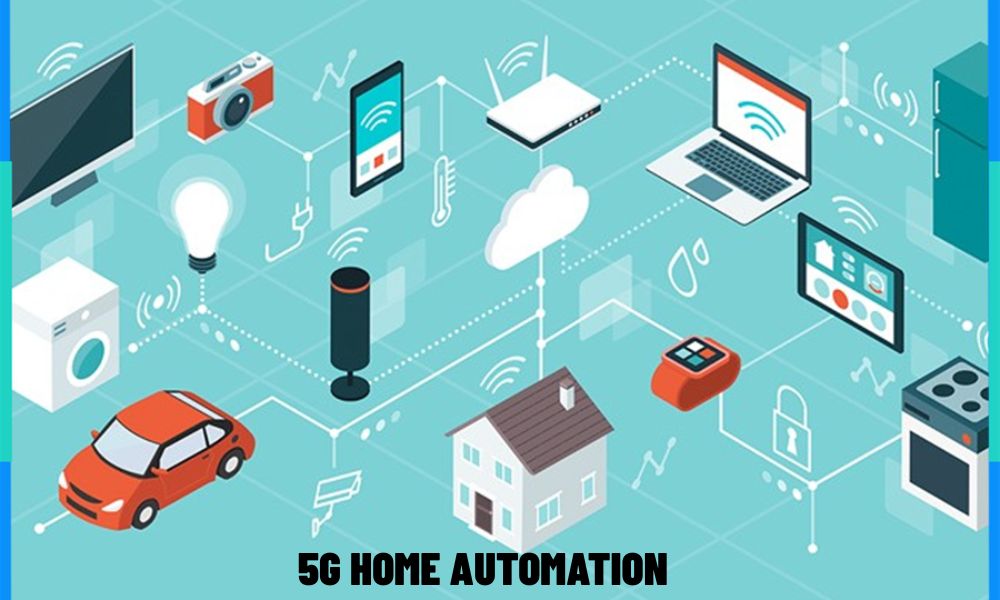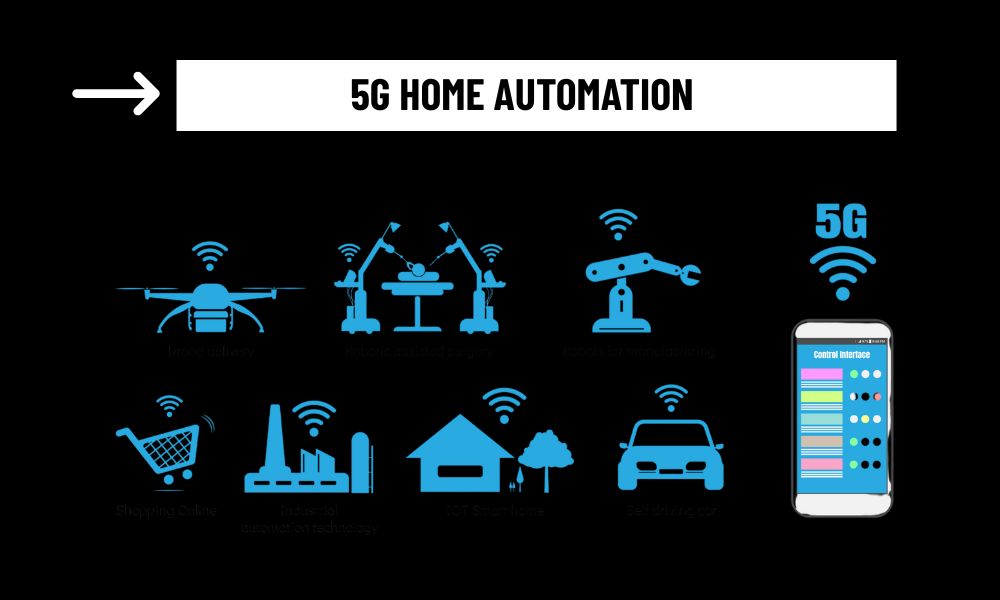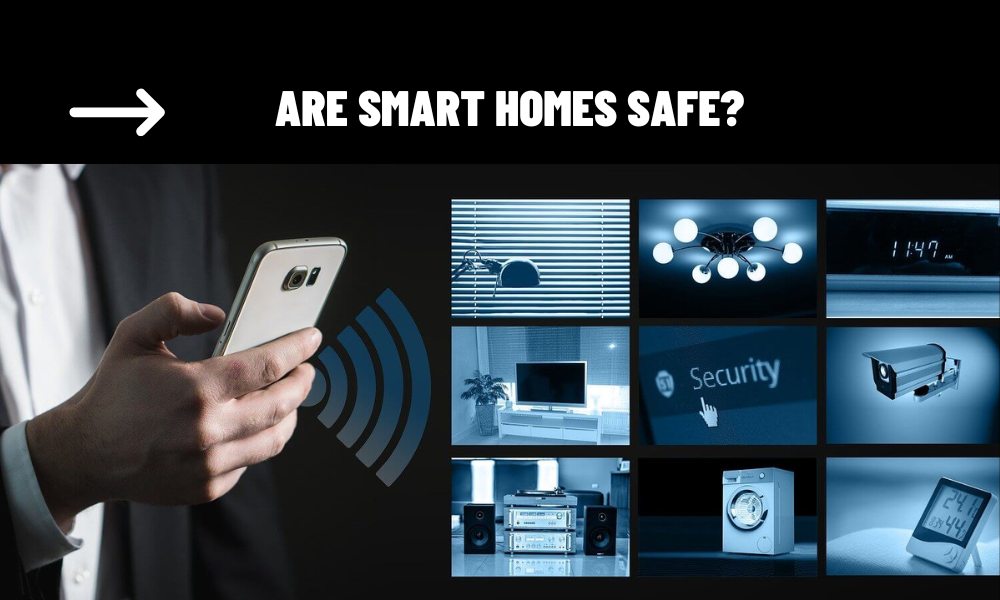The future of smart living is being redefined by a new kind of wireless revolution – 5G home automation. As homes grow increasingly connected, the limitations of older network technologies have become more apparent. Enter 5G: with ultra-fast speeds, near-zero latency, and massive device capacity, this next-generation mobile network is poised to supercharge smart homes like never before.
In this article, we’ll explore how 5G is shaping the next wave of home automation, the benefits it offers over traditional connectivity, and the transformative impact it promises across security, energy, entertainment, and more.
Contents
What Is 5G Home Automation?
5G home automation refers to the integration of 5G wireless networks into smart home ecosystems to enable faster communication between devices, more reliable remote control, and advanced real-time automation capabilities. Unlike Wi-Fi or 4G, 5G offers significantly higher bandwidth and ultra-low latency—critical for managing dozens or even hundreds of connected devices simultaneously.
This means that sensors, cameras, appliances, and systems within your smart home can interact more efficiently, respond instantly, and connect to cloud-based AI services with minimal lag.

Why 5G Is a Game Changer for Smart Homes
1. Ultra-Low Latency for Real-Time Automation
In home automation, milliseconds matter. Whether it’s a security camera detecting motion, a voice assistant executing a command, or a thermostat adjusting based on occupancy, the response time must be immediate.
5G dramatically reduces latency to under 10 milliseconds—almost real-time. This makes 5G home automation ideal for critical tasks such as:
Live streaming from high-resolution security cameras
- Real-time gesture or voice control
- Instant alerts from motion or smoke sensors
- With 5G, your smart home doesn’t just respond—it reacts.
2. Massive Device Connectivity
Smart homes are rapidly evolving from a few connected devices to dense ecosystems of sensors, hubs, appliances, and controllers. Traditional networks often struggle with bandwidth congestion as the number of devices grows.
5G networks can handle up to 1 million devices per square kilometer, making them ideal for 5G home automation systems with dozens or even hundreds of connected endpoints. This ensures stable, uninterrupted operation even during peak usage.
3. Reliable Remote Monitoring and Control
One of the main appeals of home automation is the ability to manage and monitor your home remotely. With 5G’s expanded coverage and seamless handoff between towers, users can control their smart home systems from anywhere—more reliably and quickly than ever before.
For example, imagine streaming a live 4K security camera feed while traveling or adjusting your smart thermostat on the go without worrying about connection lag or buffering. 5G home automation ensures that your system stays responsive wherever you are.
4. Support for AI and Edge Computing
Many advanced home automation systems are now leveraging artificial intelligence (AI) for predictive automation—learning routines, optimizing energy use, and even anticipating behaviors. These systems require continuous data exchange with cloud platforms or edge devices.
5G’s high-speed data transfer allows real-time synchronization with cloud AI engines or edge computing modules embedded in the home. This makes 5G home automation smarter, faster, and more adaptive than what’s possible with Wi-Fi alone.

Use Cases of 5G in Home Automation
The introduction of 5G opens up new use cases and improves existing ones across various smart home applications:
Security Systems: Faster video feeds, instant alerts, and AI-driven intrusion detection
Smart Appliances: Real-time diagnostics, remote updates, and cloud-controlled operations
Entertainment: Seamless 8K streaming, multi-room audio/video with no buffering
Energy Management: Faster communication with smart meters, solar panels, and battery storage systems
Health Monitoring: Real-time data transmission from wearable or in-home health devices
In each case, 5G home automation enhances reliability, interactivity, and user experience.
Challenges and Considerations
While 5G brings massive potential, it also introduces a few considerations:
Infrastructure Availability: 5G rollout is still ongoing. Not all areas have consistent, high-speed 5G coverage, especially in rural locations.
Device Compatibility: Most current smart home devices are built for Wi-Fi or Zigbee/Z-Wave. True 5G smart devices are still emerging.
Cost and Power: 5G modules may be more power-hungry or expensive than current wireless alternatives, especially for battery-powered sensors.
Despite these challenges, the adoption of 5G home automation is expected to accelerate as networks mature and device ecosystems catch up.
The Future Is Wireless and Instant
5G home automation represents a major leap forward in how we design, build, and live in smart environments. By offering faster speeds, ultra-low latency, and massive device support, 5G creates the foundation for homes that are more intelligent, secure, and responsive than ever before.
As the technology becomes more accessible, we can expect new innovations—from fully autonomous smart homes to immersive AR/VR control interfaces—driven by the power of 5G.
If smart homes were the first step in digital living, 5G home automation is the fast lane to what comes next.


